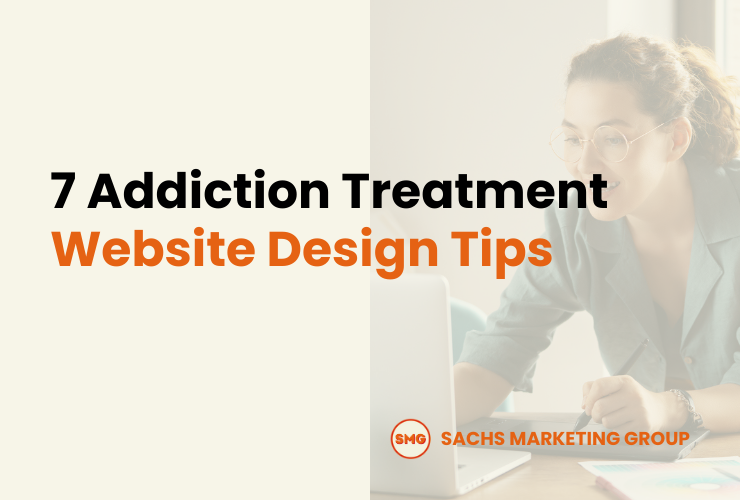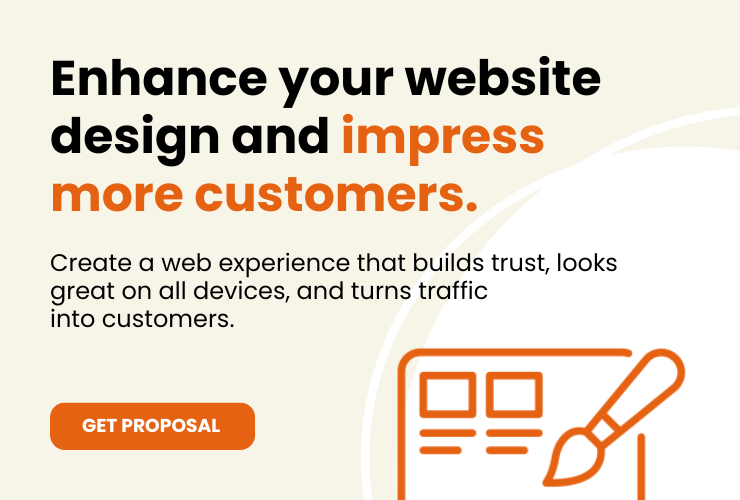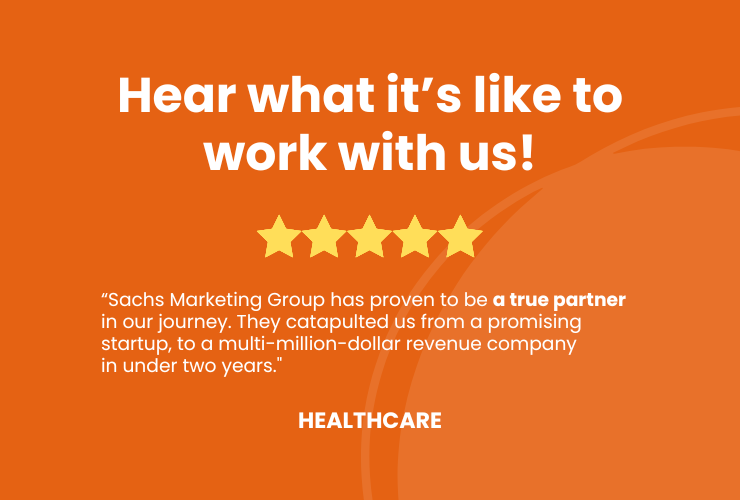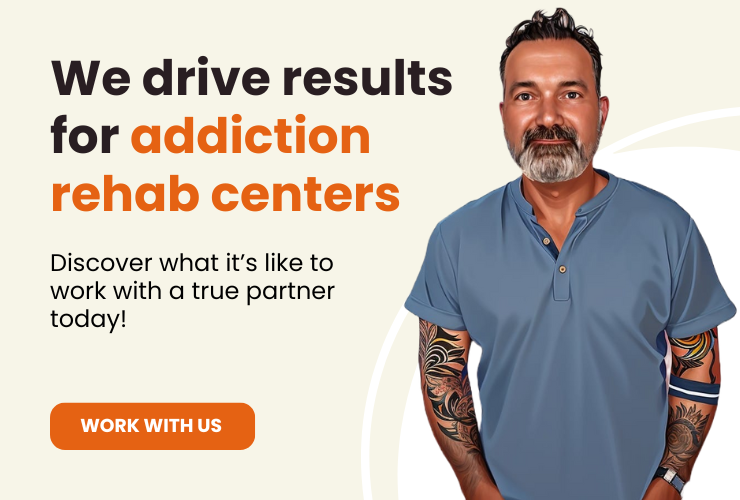There are several ways to improve an addiction treatment website design, including enhancing mobile responsiveness, consistent branding, intuitive navigation, and effective calls-to-action. Employing these elements can make your website more user-friendly and attractive to prospective clients.
Website design is often the first impression prospective clients have of your addiction treatment facility. A poorly designed website can repel visitors, costing you invaluable leads. On the other hand, a well-designed website can be a powerful tool for attracting and converting leads.
In this article, you will discover 7 addiction treatment website design tips to help improve your website as a lead-generation tool.
Key takeaways
- Ensure your website is mobile-friendly and adapts to all screen sizes for improved user experience and better search engine rankings.
- Simplify navigation with intuitive menus and clear categories to help users find information quickly and easily, reducing bounce rates.
- Maintain consistent branding across all website elements to build trust and credibility with potential clients.
Overview
The Importance of Addiction Treatment Website Design
Your website is the digital gateway to your addiction treatment center, making its design crucial for effective addiction treatment marketing and rehab lead generation.
Good design seamlessly guides visitors from curiosity to action, such as contacting your facility, while poor design can drive them away. A well-designed site captures attention, provides a smooth user experience, and turns visits into valuable leads, ultimately leading to admissions.
In contrast, a poorly designed site risks not only losing potential clients but also hindering someone's journey to recovery.
Addiction Treatment Website Design Tips
Creating a website that is both aesthetically pleasing and functional isn't as straightforward as it may seem. It requires a well-thought-out strategy and the integration of several key elements.
Here are 7 addiction treatment website design tips that help strengthen your website as a lead-generation tool:
1. Responsive Design
In today's digital landscape, an increasing number of people are accessing websites via mobile devices, making responsive design a crucial aspect of any successful web strategy.
When someone in need of addiction treatment services starts their search, they're more likely than ever to do so on a smartphone or tablet. A responsive design ensures that your website adapts and looks good on all types of devices, from large desktop monitors to the smallest mobile screens.
Having a responsive design isn't just about making your site "look good." It's about functionality and user experience. Navigation should be straightforward, buttons should be easily clickable, and important information should be readily accessible, regardless of screen size.
A responsive design enhances usability, reducing the likelihood of potential clients leaving your site due to frustration.
Google also favors mobile-friendly sites, which means a responsive design can help improve your search engine ranking, making it easier for people to find you.
2. Consistent Branding
Branding is more than just a logo or a catchy tagline; it's a representation of your treatment center's mission, values, and promises.
Consistency in branding goes a long way in establishing trust and reliability. When visitors land on your website, they should immediately get a sense of what your treatment center is about and what makes you unique in helping people on their road to recovery. From the colors and fonts you use to the style of imagery and tone of the content, consistency helps reinforce your brand's message.
When all visual and textual elements on your website align with your overall brand, you create a cohesive and engaging user experience. This consistency is particularly vital in the addiction treatment sector, where building trust can directly impact someone's decision to seek help. Inconsistent branding can lead to confusion or, worse, a lack of trust in the services you provide.
On the other hand, a consistent brand presentation across all platforms can increase revenue by up to 23%, according to Forbes. So, make sure to maintain consistent branding elements throughout your website, as it not only adds to its aesthetic appeal but also significantly contributes to building trust and credibility, which are paramount in lead generation.
3. Clear Navigation
A website's navigation is essentially its roadmap, guiding users to the information they seek.
This is especially critical for addiction treatment centers, where the ease with which someone can find treatment options, admission details, or contact information could be a matter of life or change. Clear, intuitive navigation is crucial for helping users move through the website's pages effortlessly, increasing their likelihood of taking the action you desire, such as filling out a contact form or making a call.
Menu items should be descriptive but concise, allowing the user to know exactly what they'll find when they click on it. In the same vein, a hierarchical structure with clear categories and sub-categories aids comprehension. Utilize universally understood icons and indicators like arrows or plus signs to indicate dropdown menus or expandable content.
The goal is to make the user's journey as seamless as possible, reducing friction and creating pathways to conversion. Poor navigation leads to high bounce rates and lost opportunities; conversely, effective navigation can dramatically boost engagement and conversions.
4. Color Psychology
The psychology of color can be a powerful tool in web design, particularly for addiction treatment centers where eliciting specific emotional responses can be pivotal.
Research suggests that color can influence our mood, feelings, and even behavior—an important consideration when you're dealing with a topic as sensitive as addiction recovery.
Calming colors like blues and greens are often employed in healthcare settings to evoke feelings of peace and wellness. These colors can help visitors feel more comfortable and safe while browsing your website, which could be their first step towards recovery.
However, it's not only about selecting a color because it has a specific psychological effect. The colors must also align with the branding and mission of your addiction treatment center. For instance, a youthful, energetic center might incorporate some brighter, optimistic colors like yellow or orange, but always in a measured way that complements the overall tone and message of the site.
Moreover, colors can be used strategically for calls to action, guiding users toward taking specific steps like calling for a free consultation or downloading a resource.
Ultimately, the palette you choose should create a harmonious balance, contributing to a cohesive and effective user experience that aligns with your center's goals.
5. Calls to Action
The psychology of color can be a powerful tool in web design, particularly for addiction treatment centers where eliciting specific emotional responses can be pivotal.
Research suggests that color can influence our mood, feelings, and even behavior—an important consideration when you're dealing with a topic as sensitive as addiction recovery.
Calming colors like blues and greens are often employed in healthcare settings to evoke feelings of peace and wellness. These colors can help visitors feel more comfortable and safe while browsing your website, which could be their first step towards recovery.
However, it's not only about selecting a color because it has a specific psychological effect. The colors must also align with the branding and mission of your addiction treatment center. For instance, a youthful, energetic center might incorporate some brighter, optimistic colors like yellow or orange, but always in a measured way that complements the overall tone and message of the site.
Moreover, colors can be used strategically for calls to action, guiding users toward taking specific steps like calling for a free consultation or downloading a resource.
The palette you choose should create a harmonious balance, contributing to a cohesive and effective user experience that aligns with your center's goals.
6. High-quality Images
Visual content often serves as the immediate emotional touchpoint when someone lands on your website.
For addiction treatment centers, this can be a moment of high vulnerability and uncertainty for visitors. High-quality, well-composed images can serve multiple purposes — they can convey empathy, offer a sense of the facility's environment, and depict a journey toward recovery. Importantly, these images can help establish credibility, an essential element when someone is considering a life-altering commitment like addiction treatment.
Avoid using generic, impersonal stock photos that could be seen on any healthcare site. Instead, opt for images that genuinely represent your facility, your staff, and even your alumni, as long as you have proper consent.
Authenticity resonates with people; they want to see a real place where real healing occurs. These visuals can work hand-in-hand with your text content to create a fuller, more nuanced picture of what a visitor can expect from your facility, encouraging them to take the next step in their recovery journey.
7. Hire an Addiction Treatment Website Design Expert
Designing a website isn't just about making something look good; it's about creating a functional, user-friendly platform that aligns with your specific objectives, particularly in a field as specialized as addiction treatment.
An addiction treatment website design expert will understand the unique needs and compliance requirements of an addiction treatment facility. They can guide you through best practices in user experience, SEO, and conversions, effectively turning your site into a robust lead-generation machine.
Working with an expert also means that you can stay updated with the latest trends and technologies in web design, something that's difficult to do if web design is not your specialty.
They can employ advanced techniques and features you might not even be aware of, which can significantly optimize your site's performance and, by extension, your lead generation efforts. The value of professional expertise is not merely in coding skills but in an integrated approach to design, usability, and marketing, which can significantly boost the success of your online presence.
Partner with Sachs Marketing Group
When it comes to addiction treatment website design, it pays to partner with experts.
Sachs Marketing Group offers a full suite of digital marketing services, including specialized website design for addiction treatment centers. We’ve been providing addiction treatment website design since 2010, so we know what works when it comes to creating websites that not only look good but also convert.
Reach out today and schedule a call to discover how we can help improve your addiction treatment website design.
Get a free, no obligation review of your digital marketing strategy!
"*" indicates required fields





